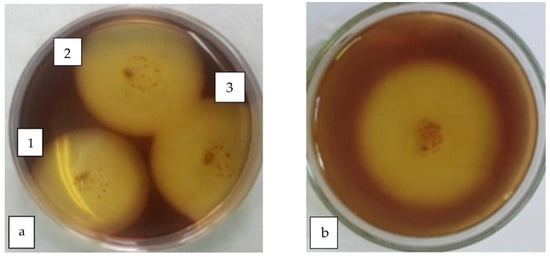- Article
Biodegradation of Cellulose—Laboratory Scale Analysis of Bacterial Consortium Isolated from a Methanogenic Anaerobic Bioreactor
- Yana Gocheva,
- Lyudmila Dimitrova and
- Maya Zaharieva
- + 8 authors
Urban areas and suburbs are facing many environmental problems, one of which is the increasing pollution due to the accumulation of cellulosic waste. This article presents a laboratory study on the microbial biodegradation processes of paper as a cellulosic substrate under anaerobic and mesophilic cultivation conditions. A bacterial consortium with cellulose-degrading activity, as well as 4 individual strains originating from a methanogenic anaerobic bioreactor (BRA), was isolated, identified, and characterized. The results demonstrated that the consortium degraded 57.14% of the cellulose matrix within 20 days. Among the individual colonies, colonies 1 and 2 (identified as Clostridium tertium and Agromyces rhizospherae) exhibited lower activities (35.37% and 34.79%, respectively), while colony 3 (Clostridium paraputrificum) displayed the highest activity (83.74%). The mixture of all four colonies achieved lower degradation (21.22%). The performed metagenomic analysis of the microbial consortium revealed a wide variety of different bacterial genera, among which Clostridium, Bacteroides, and Ruminiclostridium dominate, and the species Bacteroides oleiciplenus, Clostridium butyricum, and Ruminiclostridium papyrosolvens. Scanning electron microscopy visualized the adhesion and morphological features of the degrading microbial population. Additional experiments on the development of a laboratory model for the anaerobic biodegradation of cellulose were carried out in BRAs by using different working volumes. A maximal level of cellulose decomposition was achieved in the BRA with a working volume of 1 L, reaching 71.0% cellulose decomposition on day 20. Long-term storage studies confirmed the survival and well-preserved activity of the consortium and individual isolates, demonstrating their potential for the development of bioconversion technologies.
8 December 2025





